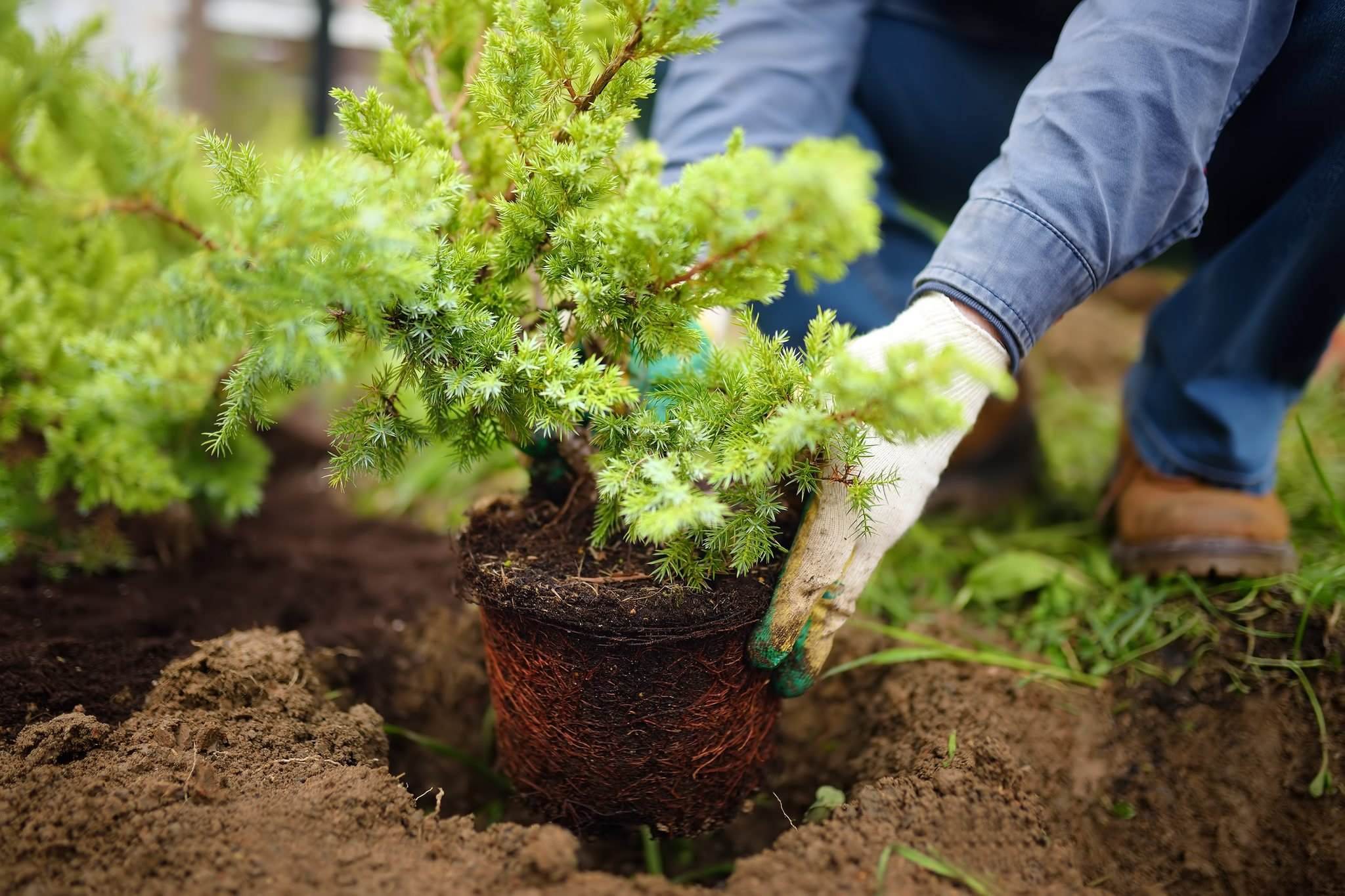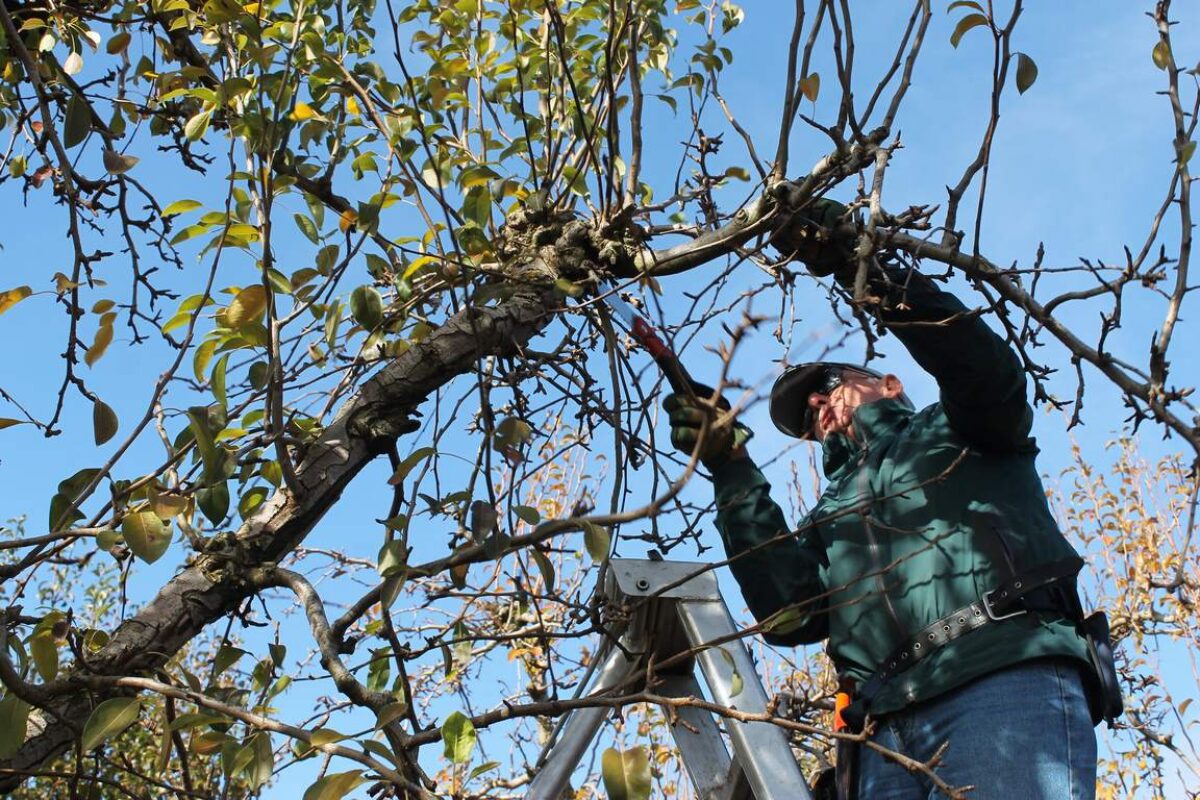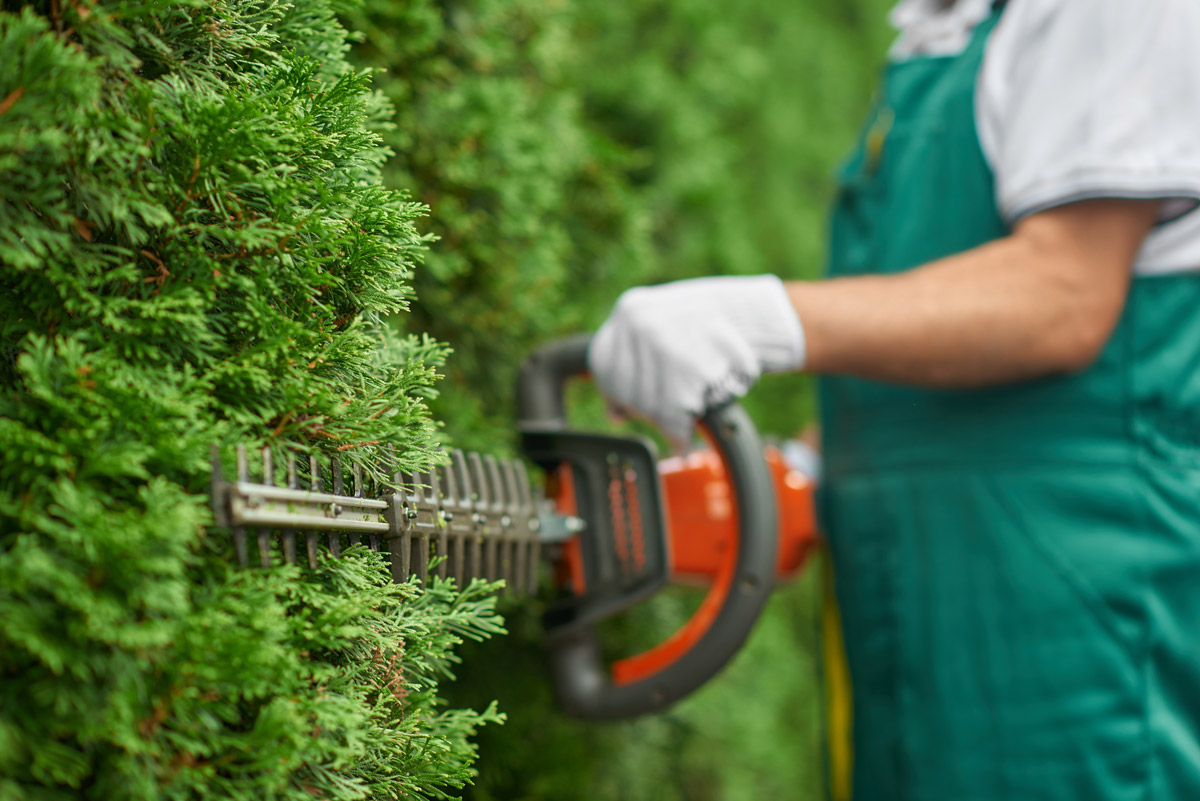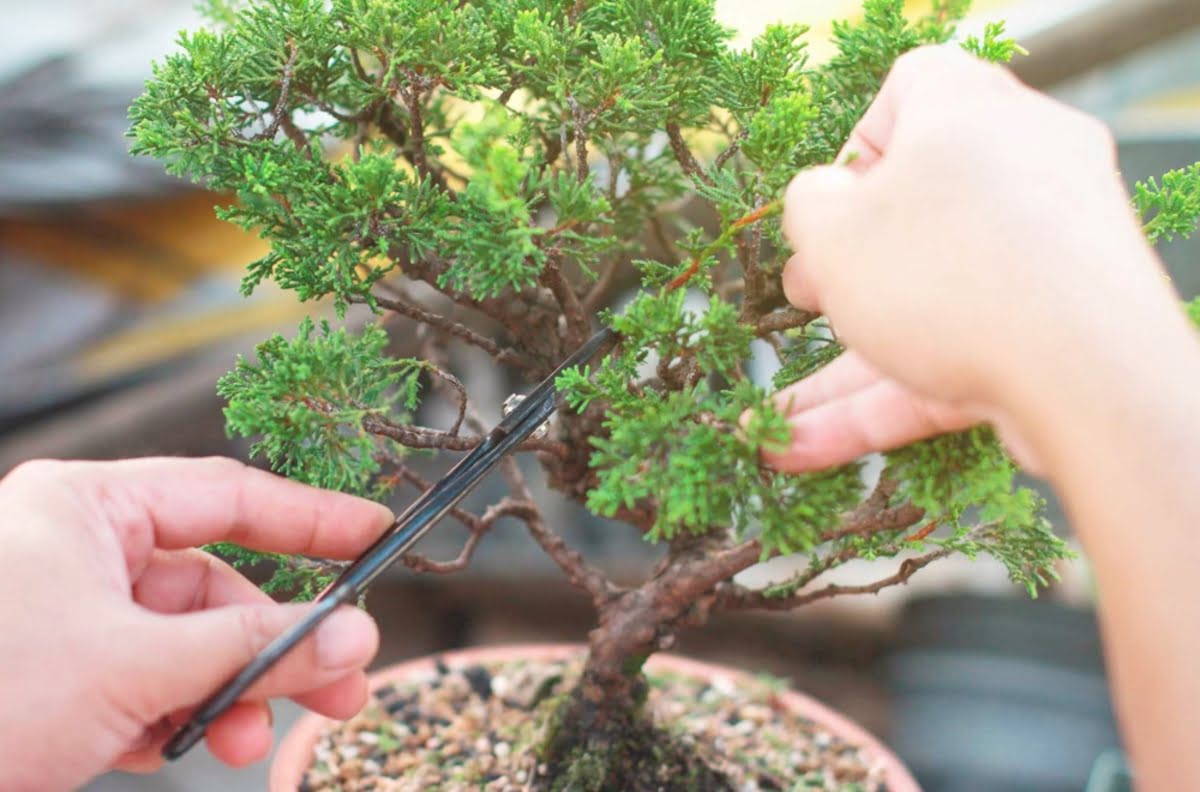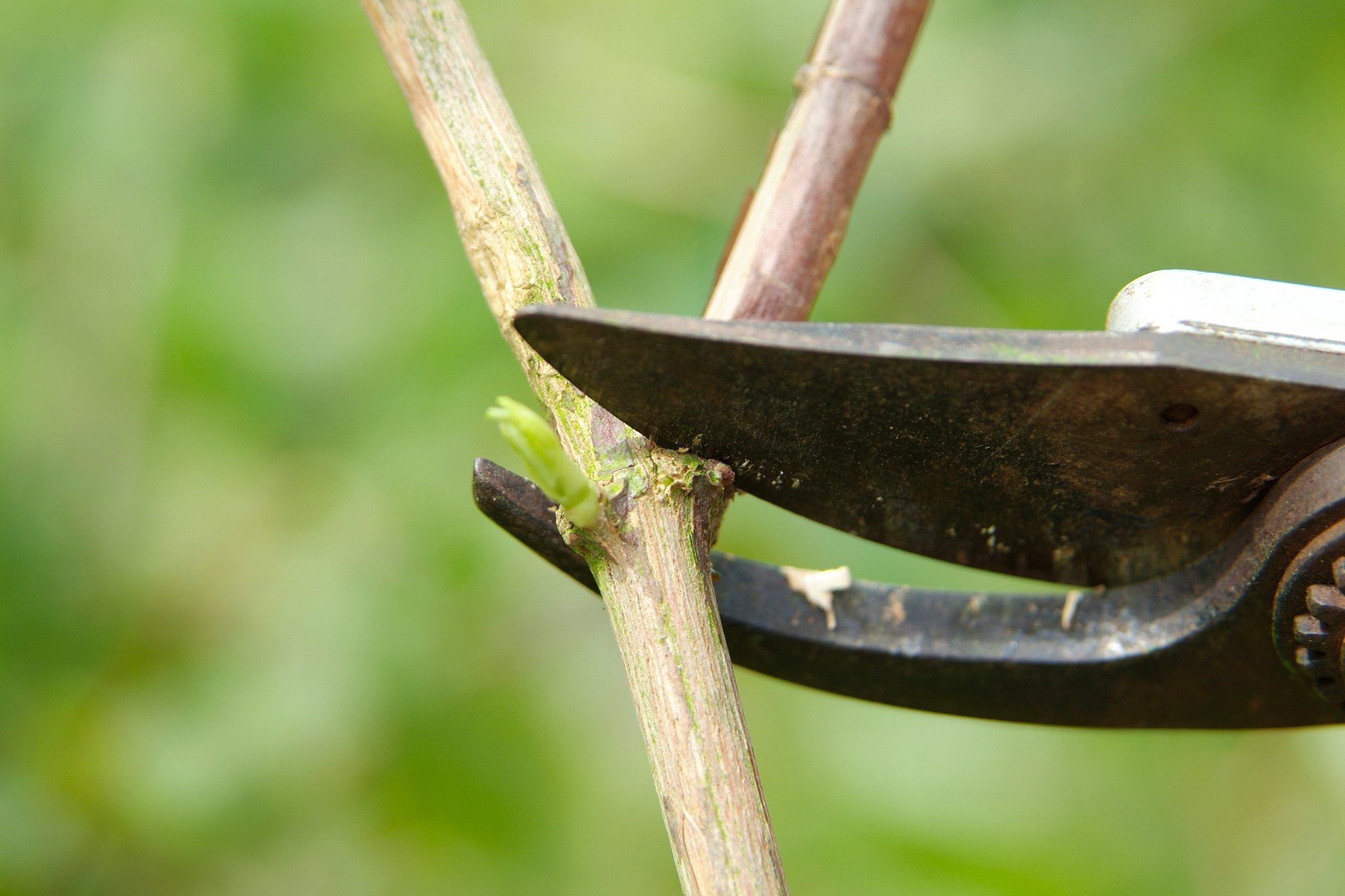Home>Types of Gardening>Edible Gardening>When To Prune A Rosemary Bush?


Edible Gardening
When To Prune A Rosemary Bush?
Published: January 29, 2024
Wondering when to prune your rosemary bush for your edible gardening needs? Find out the best time to trim and shape your rosemary plant to keep it healthy and thriving.
(Many of the links in this article redirect to a specific reviewed product. Your purchase of these products through affiliate links helps to generate commission for Chicagolandgardening.com, at no extra cost. Learn more)
Table of Contents
Introduction
Welcome to the wonderful world of edible gardening! If you’re a gardening enthusiast, or even a beginner looking to explore the joys of growing your own food, you’ve come to the right place. In this article, we’ll be focusing on the art of cultivating delicious and aromatic herbs in your own backyard. Specifically, we’ll dive into the topic of pruning rosemary bushes, a popular and versatile herb that adds both flavor and fragrance to your culinary creations.
Rosemary, scientifically known as Rosmarinus officinalis, is a perennial evergreen herb that hails from the Mediterranean region. With its needle-like leaves and delicate blue flowers, rosemary not only adds beauty to your garden, but it also gives an enticing aroma that fills the air. Apart from its ornamental appeal, rosemary has a plethora of culinary uses and is a staple in many kitchens worldwide.
Pruning is an essential aspect of caring for your rosemary bush, as it helps maintain its health, shape, and overall vitality. By selectively removing specific branches and foliage, you can encourage new growth, ensure proper air circulation, and prevent disease. However, pruning can be intimidating for beginners, as they may be unsure of when and how to tackle the task. But fear not! In this article, we will guide you through the process, providing you with the knowledge and confidence to successfully prune your rosemary bush.
Whether you’re a seasoned gardener looking for some tips or a novice eager to learn the ropes, this article will equip you with the necessary information to keep your rosemary bushes healthy and thriving. So, grab your gardening tools and let’s dive into the world of rosemary bush pruning!
Understanding Rosemary Bush Pruning
Before we delve into the specifics of when to prune your rosemary bush, it’s important to understand the purpose behind pruning and the benefits it brings. Pruning is the act of selectively removing parts of the plant, such as branches, stems, and foliage, to promote growth, shape the plant, and maintain its overall health.
When it comes to rosemary, pruning serves several purposes. Firstly, it helps to maintain the desired shape and size of the bush, preventing it from becoming unruly or overcrowded. By selectively removing branches, you can create a more compact and visually appealing plant.
Secondly, pruning promotes the growth of new, healthy shoots. By cutting back older, woody stems, you encourage the plant to produce fresh growth from the base. This rejuvenation not only improves the aesthetic appearance of the rosemary bush, but it also enhances its overall vigour and productivity.
Thirdly, pruning allows for better air circulation and sunlight penetration throughout the plant. This is crucial in preventing the development of fungal diseases, which thrive in moist and poorly ventilated conditions. By removing crowded or crossing branches, you create a more open and airy environment for your rosemary bush.
Lastly, pruning helps to control the size of the rosemary bush. While rosemary is generally a slow-growing plant, it can reach a substantial size if left unattended. Regular pruning keeps the plant in check, ensuring it remains at a manageable height and width, especially in smaller garden spaces.
Now that you have a better understanding of why rosemary bush pruning is important, let’s move on to the next section, where we’ll explore the telltale signs that indicate when your rosemary bush needs pruning.
Signs that Your Rosemary Bush Needs Pruning
Pruning your rosemary bush at the right time is crucial for maintaining its health and ensuring optimal growth. But how do you know when your plant is ready for a trim? Here are a few signs that indicate it’s time to grab your pruning shears:
- Overgrowth: When your rosemary bush starts to outgrow its designated space, with branches sprawling out in all directions, it’s a clear sign that pruning is needed. Overgrowth can lead to a crowded and tangled appearance, hindering air circulation and promoting disease.
- Woody Stems: If you notice thick and woody stems at the base of your rosemary bush, it’s a sign that some rejuvenation pruning is necessary. Pruning back these old stems encourages the growth of fresh, more vibrant shoots and ensures the overall health and longevity of the plant.
- Lack of Vigor: Is your rosemary bush looking lackluster and producing fewer leaves and flowers than before? This could be an indication of the need for pruning. By removing dead or diseased branches, you can redirect the plant’s energy towards promoting new growth and restoring its vigor.
- Crossing Branches: Crossing branches can create a crowded and tangled mess within your rosemary bush. It’s important to identify and remove these branches to improve air circulation, prevent disease, and maintain the plant’s desired shape and structure.
- Diseased or Infested Branches: If you spot any branches that are diseased, infested with pests, or showing signs of rot, it’s crucial to prune them immediately. Removing these sections helps prevent the spread of disease and protects the overall health of your rosemary bush.
Take the time to closely observe your rosemary bush on a regular basis and keep an eye out for these signs. By staying proactive and addressing the pruning needs of your plant, you can ensure its longevity, productivity, and overall vitality. In the next section, we’ll discuss the best time to prune your rosemary bush.
Best Time to Prune a Rosemary Bush
Timing is key when it comes to pruning your rosemary bush. Pruning at the right time ensures minimal stress on the plant and allows for optimal regrowth and recovery. The best time to prune a rosemary bush is in the late spring or early summer, after the plant has finished flowering.
Pruning in the late spring or early summer allows the rosemary bush to take advantage of the warm weather and longer daylight hours. This promotes rapid healing of the pruning wounds and encourages new growth to emerge quickly. Additionally, pruning after flowering ensures that you don’t disrupt any potential blooms.
Before you start pruning, make sure that frost and freezing temperatures are no longer a threat in your area. Rosemary is sensitive to cold temperatures and can suffer damage if pruned too early when frost is still a risk.
It’s important to note that light pruning can be done throughout the year to maintain the shape and size of the rosemary bush. However, more significant pruning, such as rejuvenation pruning or removing larger branches, should be reserved for the late spring or early summer.
Remember, each rosemary bush is unique, and the ideal pruning time may vary based on regional climate and specific growing conditions. It’s always a good idea to observe your plant closely and take cues from the growth patterns and seasonal changes in your area.
Now that you know when to prune your rosemary bush, let’s move on to the next section, where we’ll provide a step-by-step guide on how to prune your rosemary bush effectively.
Step-by-Step Guide to Pruning a Rosemary Bush
Pruning your rosemary bush doesn’t have to be a daunting task. By following these simple steps, you can effectively prune your rosemary bush and keep it healthy and thriving:
- Gather the necessary tools: Before you begin, make sure you have a pair of sharp pruning shears or hedge trimmers, gloves to protect your hands, and a clean cloth or paper towel to wipe down your tools.
- Assess the plant: Take a close look at your rosemary bush and identify the branches that need pruning. Look for any crossing branches, dead or diseased sections, or overgrown areas that need to be trimmed back.
- Start with light pruning: Begin by lightly pruning the tips of the rosemary branches, removing about one-third of the growth. This helps to shape the bush and encourage bushier growth.
- Remove dead or diseased branches: Use your pruning shears to carefully remove any branches that are dead, diseased, or infested with pests. Cut these branches back to the base or to where healthy green growth is present.
- Trim crossing branches: Identify any branches that are crossing or rubbing against each other. Choose the weaker of the two branches and remove it completely to prevent further damage or disease spread.
- Rejuvenation pruning (if needed): If your rosemary bush has thick and woody stems at the base, you may opt for rejuvenation pruning. Cut these older stems back to the base, leaving behind a few inches of new growth to ensure the plant’s vitality.
- Clean up: Once you have finished pruning, clean up any pruned branches or debris from around the rosemary bush. This helps to maintain a clean and tidy garden space.
- Water and care: After pruning, give your rosemary bush a thorough watering to help it recover and promote new growth. Continue to care for your plant by providing adequate sunlight, well-draining soil, and regular watering as needed.
Remember, the goal of pruning is to enhance the health and appearance of your rosemary bush. Take your time, be patient, and observe the natural shape and growth patterns of your plant as you prune. With practice, you’ll develop a pruning routine that keeps your rosemary bush in optimal condition.
In the next section, we’ll share some helpful tips to keep in mind when pruning your rosemary bush.
Tips for Pruning Rosemary Bushes
Pruning your rosemary bushes is a rewarding endeavor that not only maintains their health but also promotes optimal growth and productivity. Here are some helpful tips to keep in mind when pruning your rosemary bushes:
- Use sharp pruning tools: Ensure that your pruning shears or hedge trimmers are sharp and clean. Dull blades can damage the branches and make clean cuts difficult.
- Prune after flowering: As mentioned earlier, it’s best to prune your rosemary bushes after they have finished flowering. This allows the plant to focus its energy on new growth rather than expending resources on developing flowers.
- Don’t remove more than one-third of the growth: Avoid over-pruning your rosemary bushes. Removing more than one-third of the growth can result in stress for the plant and may hinder its ability to recover.
- Prune in the morning: Pruning in the morning when the weather is cooler helps minimize stress on the plant. It also allows the cut branches to dry out quickly, reducing the risk of fungal infections.
- Shape the bush gradually: If you’re aiming to shape your rosemary bush, do it gradually over multiple pruning sessions. This helps the plant adjust to the changes and ensures a more natural and balanced appearance.
- Regularly sanitize your tools: Clean your pruning tools with a disinfectant or rubbing alcohol before and after each use to prevent the spread of diseases between plants.
- Take safety precautions: Wear gloves while pruning to protect your hands from sharp thorns or irritating plant oils. Also, watch out for any insects or spider webs that may be hiding in the foliage.
- Consider using pruned branches: Don’t waste the pruned rosemary branches! Instead, save them for culinary use or as fragrant additions to floral arrangements or potpourri.
- Observe the response of your plants: Pay attention to how your rosemary bushes respond to pruning. Each plant may have its unique growth patterns, and by observing and learning from your plants, you can tailor your pruning techniques accordingly.
By keeping these tips in mind, you’ll be well-equipped to confidently prune your rosemary bushes and enhance their health and beauty. Happy pruning!
Common Mistakes to Avoid When Pruning Rosemary Bushes
While pruning your rosemary bushes can be a beneficial practice, it’s important to avoid certain common mistakes that can hinder the health and growth of your plants. Here are some key mistakes to avoid when pruning your rosemary bushes:
- Pruning too late in the season: Waiting too long to prune your rosemary bushes can lead to woody and leggy growth. Aim to prune in the late spring or early summer for optimal results.
- Over-pruning: Removing more than one-third of the growth at a time can shock your rosemary bushes and compromise their ability to recover. Stick to light pruning and avoid excessive cutting.
- Pruning with dull tools: Using blunt pruning shears or hedge trimmers can result in jagged cuts, damaging the branches and potentially introducing disease. Make sure your tools are sharp for clean cuts.
- Pruning during extreme weather: Avoid pruning your rosemary bushes during hot, dry spells or during freezing temperatures. Extreme weather conditions can stress the plants and hinder their ability to recover.
- Removing all the foliage: While it can be tempting to trim back all the foliage for a neat appearance, it’s important to leave some greenery behind. The leaves are essential for photosynthesis and overall plant health.
- Ignoring the natural shape of the bush: Rosemary bushes have a naturally sprawling growth habit. Avoid trying to force them into rigid shapes that go against their natural form. Work with the plant’s natural growth patterns for a healthier and more attractive bush.
- Pruning diseased plants without proper sanitation: If you encounter any diseased branches during pruning, make sure to sterilize your tools between each cut to prevent the spread of diseases between plants.
- Not observing the plant’s response: Each rosemary bush may have unique growth patterns and responses to pruning. Take the time to observe how your plants react to pruning and adjust your techniques accordingly for future pruning sessions.
By avoiding these common mistakes, you’ll ensure that your rosemary bushes remain healthy, vibrant, and productive. Remember, pruning is a skill that improves with practice, so don’t be afraid to learn from your experiences and adapt your techniques as needed.
Conclusion
Pruning your rosemary bushes is an essential task for maintaining their health, promoting optimal growth, and enhancing their visual appeal in your garden. By following the right approach and timing, you can keep your rosemary plants thriving and productive. Remember to assess the signs that indicate your rosemary bush needs pruning, such as overgrowth, woody stems, and lack of vigor.
Timing is crucial, and the best time to prune your rosemary bush is in late spring or early summer, after it has finished flowering. Light pruning can be done throughout the year, while more significant pruning should be reserved for the recommended time frame.
When pruning, follow a step-by-step guide to ensure you’re trimming the right branches and shaping the bush correctly. Be mindful of common mistakes to avoid, including over-pruning, using dull tools, and ignoring the natural shape of the bush.
By implementing these tips for pruning your rosemary bushes, you can maintain their health, encourage vigorous growth, and enjoy the culinary benefits of this aromatic herb. Take your time, observe your plants, and adjust your techniques as needed. With practice, you’ll become a skilled rosemary pruner, nurturing healthy and beautiful bushes year after year.
Now, grab your pruning tools and begin the journey of maintaining your beautiful rosemary bushes. Happy gardening!
